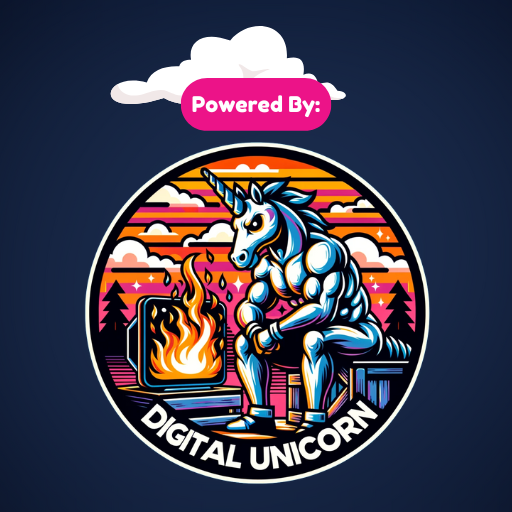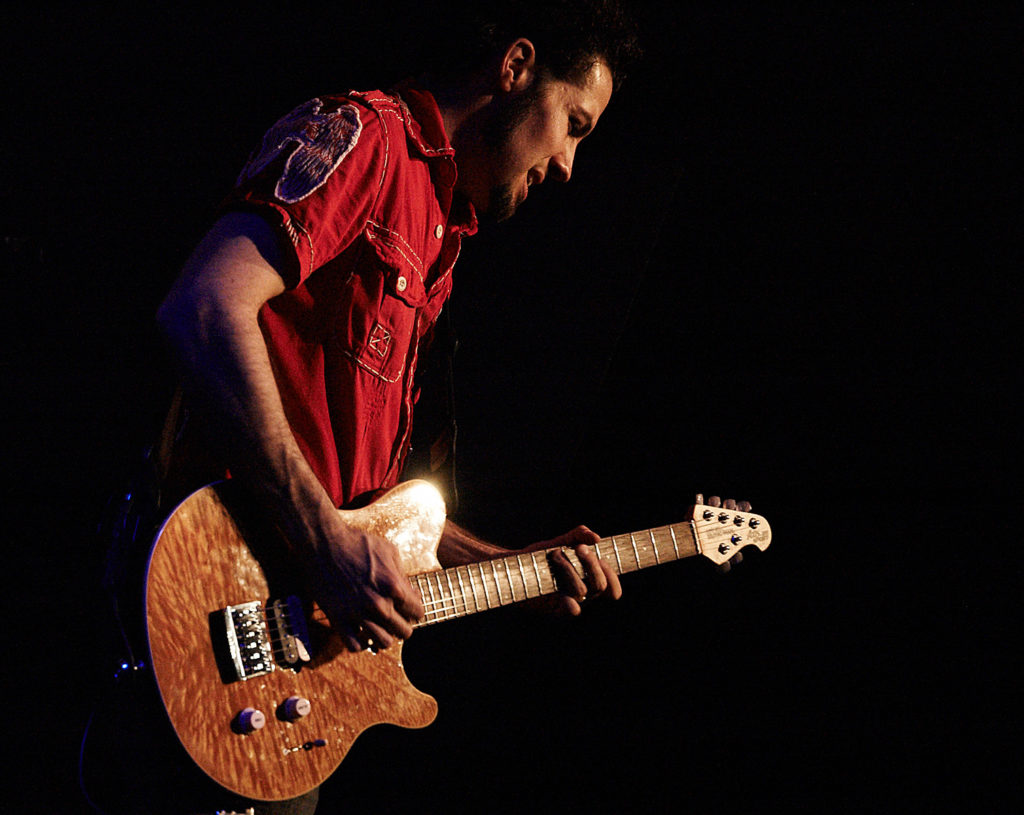 Hamilton Loomis makes a welcome appearance at Playhouse Boise on Thursday, May 16. The concert, presented by the Boise Blues Society, showcases the Galveston, Texas born and raised Loomis on guitar, harmonica and vocals. Not just a blues player by definition, Hamilton Loomis works the music he grew up with into his style, encompassing R&B, funk and even classic rock ‘n’ roll into his music. Growing up in a musical family that played and loved music, his parents had a tremendous record collection that influenced young Hamilton as he started learning guitar and harmonica as well as drums and piano. At 16, he wound up meeting and developing a friendship and also being mentored by the great Bo Diddley.
Hamilton Loomis makes a welcome appearance at Playhouse Boise on Thursday, May 16. The concert, presented by the Boise Blues Society, showcases the Galveston, Texas born and raised Loomis on guitar, harmonica and vocals. Not just a blues player by definition, Hamilton Loomis works the music he grew up with into his style, encompassing R&B, funk and even classic rock ‘n’ roll into his music. Growing up in a musical family that played and loved music, his parents had a tremendous record collection that influenced young Hamilton as he started learning guitar and harmonica as well as drums and piano. At 16, he wound up meeting and developing a friendship and also being mentored by the great Bo Diddley.
These days, Hamilton Loomis is an international star whose multiple albums are hits all over the world. His touring encompasses not only the United States, but across the globe from Australia to Europe. Hamilton talked recently to The Boise Beat about his music, his family, his new CD Basics, his upcoming return to Boise and much more.
Q: How did you learn to love the blues?
A: I grew up in the Houston blues scene. Houston is close to Galveston where I grew up. My parents had a fantastic record collection of blues and soul. I picked it up from there; and I was fortunate when I was a teenager to be able to learn from some of the Gulf Coast blues luminaries like Joe Hughes, Johnny Copeland Albert Collins and Clarence “Gatemouth” Brown. That’s where I got my education so to speak, my musical education.
Growing up, I realized that I wasn’t going to be able to duplicate traditional blues so I started writing my own stuff, honoring blues but with a ‘twist’, a conglomerate of styles that I listened to growing up, including rock and funk and soul and pop. That’s why my music sounds quite different—it’s not just traditional blues. It honors the blues.
Q: So you like to mix other elements into the blues…….
A: I don’t really pigeonhole myself into one genre. My music is definitely rooted in the blues, it’s blues-based. But it really is a mixture of all the music that I loved growing up. Bo Diddley was a huge supporter and a mentor to me. Stylistically, he was an influence. He told me, “don’t sound like me, sound like YOU”. As a 16 year old kid, what does “me” sound like, so that was the beginning of my journey. No one sounds like Bo Diddley, so I took that to heart. What does “me” sound like, what do I like?
I like blues, but I like R&B and Funk and Soul and Rock. I grew up in the 80’s, so MTV and pop music was huge, so my stuff comes out with the layers of it. The rhythm is funky, with that R&B sort of thing, but then the guitars are very, very bluesy. The vocals have more melody than traditional blues. Traditional blues is all improvised, there aren’t many written melodies—it’s all improvised—which is a beautiful thing. I like having something singable that people can remember as well—I picked that up from the pop elements. That’s kind of what it all ends up sounding like! I try to make it as homogenous as possible.
Q: Are you happy to be back playing in Boise again?
A: Well of course! I have some history in Boise now, especially with the Boise Blues Society. Ken Harris is the one who first brought us there. We’ve developed a following rather quickly and every show there has been wonderful. The people there are so supportive and I actually even did two of my world-famous harmonica workshops there in Boise. Technically in Nampa, but it’s close by!
I’ve spent a lot of time in Boise and I learned how to say it correctly—Boi-see, not Boi-zee. They taught me how to do that the first time! I’ve got history there and I love coming back because people are really supportive and the Boise Blues Society has just been wonderful, so I’m looking forward to it.
Q: Is there a big difference for you playing onstage as opposed to recording an album?
A: Of course! I feed off the energy of an audience—I live for that connection with the audience. I love playing small venues as well as big venues, festivals and concerts because there’s more of a connection with the audience.I was just talking about that with my band members the other day; that’s one of the reasons why in the live shows I like to go out in the crowd. It has nothing to do with showing off, it has to do with getting closer to people and feeling people’s energy; and looking at the expressions on their faces. It affects the way I play as well.
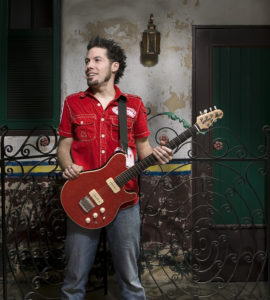 There’s one song in the set that I really stretch out and play a lot of guitar on. I really don’t like super-long guitar solos—I think they get boring; and I’m a guitar player! But there’s one song where I go out into the crowd, which of course I will do when we play there in Boise on the 16th. I like getting close to people, I never know what’s going to happen. I never know what I’m going to play and I feed off of people’s reactions, I just start playing and I watch people’s faces and I watch their eyes and I listen to their responses. Some people go”ooohhhh”, or “do it again” and I’ll make eye contact with those people. I’ll go in that direction and the solo changes according to the audience’s facial expressions.
There’s one song in the set that I really stretch out and play a lot of guitar on. I really don’t like super-long guitar solos—I think they get boring; and I’m a guitar player! But there’s one song where I go out into the crowd, which of course I will do when we play there in Boise on the 16th. I like getting close to people, I never know what’s going to happen. I never know what I’m going to play and I feed off of people’s reactions, I just start playing and I watch people’s faces and I watch their eyes and I listen to their responses. Some people go”ooohhhh”, or “do it again” and I’ll make eye contact with those people. I’ll go in that direction and the solo changes according to the audience’s facial expressions.
That’s a really beautiful thing, that the thing that you can get with a live concert that you just can’t get with anything else; like listening to music or watching a YouTube video. It’s just not the same. That connection is also gratifying for me because I’m reaching people, but it’s also a great connection for the audience because they feel like they’ve been a part of what just went on. They influenced the music in a way and I think that’s a really great thing. I’ve been doing this a long time and that’s what I’ve noticed about the live shows is that connection with the audience.
Q: You play many instruments, but guitar and harmonica are special to you…..
A: Yes, those are the two that onstage I’m able to connect with the audience. Guitar is great because you can move around with it and you can get close to people. Harmonica is great also because it’s not a very common instrument. In blues, more so than in other genres, but it’s special in that way, when you don’t hear it all the time it’s special. When I play harmonica people’s ears really perk up because it’s so different and special because you don’t hear it every day.
Q: Tell me about your band……
A: I’ve got an incredible band. They’re based in Houston, with the exception of my saxophonist who is from Austin. Fabian Hernandez, on sax is actually a two-time Grammy winner. Mike Meade is the bass player and the drummer is Darren Coleman.
Q: Sugar Baby on your new album Basics has a gritty edge to it. Did you try for straight, unadorned blues here?
A: Sometimes the songs just come out bluesier or grittier than others. It’s not a formula that I go for, it’s really just the flavor of the song. That one does have some pretty gritty harmonica on it, for sure! The song itself kind of goes along with the theme of the album, Basics. That theme of basics runs through the album as far as there are a lot of basic elements to it. First of all, there are not many more instruments than drums, bass and guitar, that’s very basic. The chord progressions on a whole are very basic, the melodies are very basic and simple, even the artwork is black and white. That just goes along with it.
The songs and lyrics are more basic than my past projects because I used to like double-entendres and metaphors a lot and this album doesn’t really have that many. It’s very personal—many of the songs are inspired by my son who is now five. His name is Bo, after Bo Diddley. There are some auto-biographical songs on there.
Speaking of that song, although that is one of the grittier songs on the CD, that one actually has a deeper meaning to it. My son has hyperinsulism and that son is actually about blood sugar, because he has severely low blood sugar and it’s very rare. The organization that does all the research for his disease is called CHI, Congenital Hyperinsulinism International. They call kids with hyperinsulinism Sugar Babies; and that is what inspired the title of the song. If you listen to the lyrics, everything is about raising upor tired of being low and it’s indirectly talking about raising blood sugar. His low blood sugar, hypoglycemia, is more dangerous than high blood sugar. Kids can doe from it if it is not diagnosed in time. It’s a serious thing, but I don’t like writing sad songs, I don’t like writing “downer” for songs, so I wanted to celebrate the brave little kids with hyperinsulinism all over the world. I made it more of an upbeat, joyous song.
I do like to disguise a little bit some of the content of my lyrics because I realize that if you just say oh my blood sugar is low and I feel horrible, let’s raise it up. That’s very specific; and while that has value, I realize that if you obscure the meaning a little bit of the words and make them a little bit more universal, other people can pull other meanings out of lyrics that are maybe more applicable to them in their lives. You reach more people that way…..Sugar Baby, I made it sound like be my little sugar and I’ll be your sugar man, you know; so that could be about a relationship as well. Who hasn’t felt that way about their ‘sugar’? You reach a lot more people that way; and people who ask—in the liner notes I put the real meaning of it. So it’s there!
A classic example of that is on my last CD, Give it Back, is a song called She’s Got Enough. Well, that sounds pretty obvious what it could be about. But it was actually inspired by, at the time in 2013, there were a lot of natural disasters happening all over the world—floods, wildfires, hurricanes, tsunamis etcetera. She’s Had Enough is actually Earth, Mother Earth; as if lashing out at us for not treating her well.
If you listen to all the lyrics, there are references to When she turns up the fire you’ll feel the burn and references to wildfires in Australia. A wave of emotion and a flooding of tears—that’s a nod to the tsunamis in the South Pacific. There have been hurricanes and a whirlwind is coming to blow you away. That’s a reference to the hurricanes we had down in the Gulf Coast. When you just listen to it on the surface, it’s just like you’ve treated a woman badly and hurt her enough and you’re going to feel her wrath. That’s the type of stuff I like to do with the lyrics. I could have just said, oh there’s a flood down in Java and there’s a fire in Australia or whatever, but that’s so narrow. Why not reach more people by making it a little more broad?
That’s what I did with Sugar Baby, just made it a bit more universal, make it a joyous song. That’s definitely what it was inspired by. We like to raise awareness for hyperinsulism all over the world because it’s very rare and kids are being affected. My son had learning disabilities because it wasn’t caught in time. It’s very important for us to tell people about it; and that’s why I put a blurb about it on our website and in the liner notes of the CD.
Low blood sugar is widely ignored by the medical community, unfortunately. If you can just plant a seed in some people—maybe you should check your little one’s blood sugar—it might tell you something and it might save them from lots of bad things in the future. It’s kind of our way—it’s my wife’s idea actually—to dedicate that song to CHI, Congenital Hyperinsulism International. If you can just take that seed and plant it in someone’s mind, maybe we can save a kid’s life down the road. You just never know……so why not do it?
Q: Tell me a story from the road…..
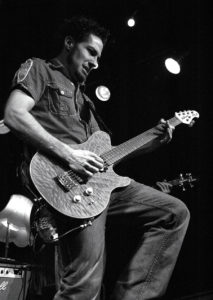 A: We were playing down in Australia and I remember that they had a festival called the Broadbeach Festival. They were accommodating all ages and it’s interesting—-you don’t see it that much. One half of the field when looking out from the stage had rows of seats and the right side had no seats. It was interesting because all of the older fans wanted to sit down and be comfortable and they had their little coolers and their little drinks. They were tapping their feet and bobbing their heads and enjoying in their own way. On the left side, all the youngsters were moshing and fist-pumping up in the air and having a good time. They didn’t bother the old folks and the old folks didn’t bother them. It was this great synergy, a great way of bringing people together.
A: We were playing down in Australia and I remember that they had a festival called the Broadbeach Festival. They were accommodating all ages and it’s interesting—-you don’t see it that much. One half of the field when looking out from the stage had rows of seats and the right side had no seats. It was interesting because all of the older fans wanted to sit down and be comfortable and they had their little coolers and their little drinks. They were tapping their feet and bobbing their heads and enjoying in their own way. On the left side, all the youngsters were moshing and fist-pumping up in the air and having a good time. They didn’t bother the old folks and the old folks didn’t bother them. It was this great synergy, a great way of bringing people together.
I saw a young dude and an old dude do a fist bump right in front of me while I was on the stage doing a guitar solo. It’s very, very powerful if you think about it, because right there in front of me in that one little space and time, the generation gap was breached and it went away. You had two very different generations enjoying the same music at the same time. Those are the type of situations where I know I am doing what I love to do and it’s worth it and it has some value—it does bring people together. Music; and live music especially, is one of the only things in this world—in our very divided world—that can bring people together with no bias and no judgement.
Q: Breaking Down is more of a ballad. So you like to mix things up?
A: I don’t do many slow songs on stage, usually only one per set. To be honest, I don’t really have a ballad voice where I think I can pull it off. I just like more up-tempo, uplifting songs; and that’s reflected in the show. I have been told that Breaking Down has some of the better lyrics that I have written. In fact, some one that I respect complimented me on those, so that made me feel good—Tommy Sims, who I co-wrote several songs on Basics with. He wrote several big songs such as Change the World for Eric Clapton. He played with Bruce Springsteen and others—-so many famous people it’s ridiculous. I respect him as a songwriter and when he and I were collaborating on songs for BasicsI said, “What do you think of this one?”. He said, “Leave it—it’s perfect!”. I replied, “Thank you—thank you for that”. It gave me more confidence as a songwriter because I’m always my own worst critic. I’m always revising and throwing paper away, which you shouldn’t do; so that made me feel good. I’m proud of that one.
That’s probably the only song that has a double-entendre on there. It just works; and there’s another thing that’s crazy. You never know which songs that certain areas or even certain countries are going to respond to. Over here in the states, because I see all the playlists from when we launched the CD, most people played Ain’t What It Ain’t. That was the favorite, Ain’t What It Ain’t and Sugar Baby and ironically, Funky Little Brother which wasn’t even going to be on the CD—-that was written tongue-in-cheek as kind of a joke. But the fans that would come to the shows said they loved the song and asked if it was going to be on the CD so I figured I better put it on there now. It doesn’t really fit the others, it’s just a funky little—I had this kind of Claymation video in my head of this little dude that’s super-funky, super-cool and that everyone who he looks at becomes funkier and everything he touches becomes funky. It’s just a little silly, but a lot of stations were playing the song.
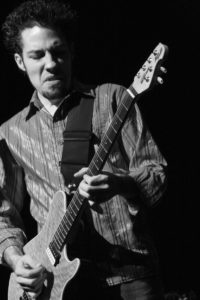 But when we went overseas, everyone was requesting Breaking Down. You just never know! We love that song, but slow songs kind of have a tie-in to slow blues, even though that song is not slow blues at all. It did associate somehow with blues however, with slow blues because it’s a ballad, so you never know. That’s the one that when we played the festival in France, in Avignon down south, that’s the song that they put on their promo, it was my recording of Breaking Down, so you just never know.I thought when I was recording it thatCandles and Winewas the one that I was putting my money on because it’s a shuffle and it came out great. That one’s about as gritty as you can get—it’s like Blues Riff 101. It’s just totally going up and down the blues scale, working with the melody. But that one’s never requested, so you never know! People request Sugar Babyand they request Ain’t What It Ain’t so there you go!
But when we went overseas, everyone was requesting Breaking Down. You just never know! We love that song, but slow songs kind of have a tie-in to slow blues, even though that song is not slow blues at all. It did associate somehow with blues however, with slow blues because it’s a ballad, so you never know. That’s the one that when we played the festival in France, in Avignon down south, that’s the song that they put on their promo, it was my recording of Breaking Down, so you just never know.I thought when I was recording it thatCandles and Winewas the one that I was putting my money on because it’s a shuffle and it came out great. That one’s about as gritty as you can get—it’s like Blues Riff 101. It’s just totally going up and down the blues scale, working with the melody. But that one’s never requested, so you never know! People request Sugar Babyand they request Ain’t What It Ain’t so there you go!
I was talking to Sherman Robertson, he’s a great Gulf Coast artist—he had a stroke years ago and doesn’t perform any more, but he was a great artist out of Breaux Bridge, Louisiana. He told me a story, he said that he did this live CD as just a side thing. He recorded it and he wasn’t even intending to put it out. He didn’t even try, it wasn’t produced well, it was just sort of a project. He ended up putting it out and it was the best CD he ever sold! He sold more copies of that one than any of his and it was the most requested CD of his of all time. He said to me, “Man, I wasn’t even intending to make that one and it became a big seller!”. You can plan all day long as an artist but you never know what people are going to respond to as an artist. I’m thankful that people respond at all.
We played a private party last Saturday, an anniversary party for a wonderful couple that we’ve known for years. They told me they had a song request list and I thought, “oh, boy”. But every one of the songs on the list were my songs, not cover songs. That meant a lot to me.
Q: Do you have anything special planned for your Boise show?
A: I’ve got songs that have been reworked for live and a few surprises here and there. We are going to be doing lots of songs off of the Basics CD, but I’ve got a couple of tributes planned to some of my favorite artists that people might get a kick out of, so we’ll see how that works. People can expect a show, an interactive show and that connection, so hopefully the audience can ride that same wave of energy—that’s the whole goal.
Q: Thanks, Hamilton. We’ll see you at the show!
The show at Playhouse Boise featuring Hamilton Loomis will also feature Scotty’s Dogs Food Truck outside and a full bar inside.
Hamilton Loomis
Playhouse Boise
8001 Fairview Avenue
Boise, ID 83704
208-779-0092
Thursday, May 16 2019, 7:30-10:30pm
Tickets and Info at Eventbrite
Hamilton Loomis website







